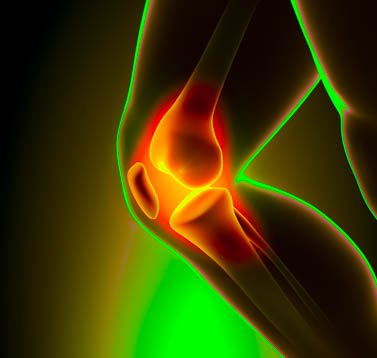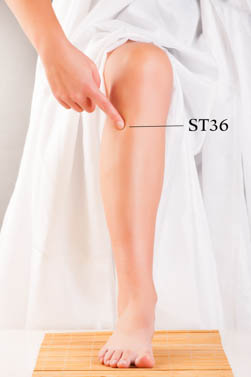Acupuncture relieves pain, stiffness, and improves knee function for patients with knee osteoarthritis. Researchers from the Chengdu University of TCM (Traditional Chinese Medicine) investigated the efficacy of acupuncture and Tui Na massage for the treatment of knee osteoarthritis.  Two groups were compared. Group 1 received only acupuncture and group 2 received a combination of acupuncture and Tui Na massage. Both groups yielded significant positive patient outcomes. The group that received the combined acupuncture and Tui Na care outperformed the acupuncture standalone care group.
Two groups were compared. Group 1 received only acupuncture and group 2 received a combination of acupuncture and Tui Na massage. Both groups yielded significant positive patient outcomes. The group that received the combined acupuncture and Tui Na care outperformed the acupuncture standalone care group.
Knee osteoarthritis is known by the vernacular ‘wear and tear’ arthritis. It involves physical damage to protective tissues and can lead to joint deformities. Symptoms include pain and range of motion impairment. Biomedical treatments include drugs and surgery.
Chengdu University of TCM researchers randomized 96 patients with knee osteoarthritis into two groups of 48 patients each. In the acupuncture only group, 11 patients had greater than an 80% recovery. In the acupuncture combined with Tui Na group, 21 patients had greater than an 80% recovery. The 80% recovery rate was based on WOMAC (Western Ontario and McMaster Universities Osteoarthritis Index) scores of pain, stiffness, and functional improvements. Additional patients in each group demonstrated significant clinical improvements, also based on WOMAC scores. As a result of the findings, the researchers conclude that acupuncture combined with Tui Na is highly effective for the resolution of knee pain and stiffness. In addition, the combined therapy is effective in the restoration of knee functionality.
The acupuncture group and the acupuncture combined with Tui Na group received acupuncture treatments at a rate of five times per week for four continuous weeks for a grand total of twenty acupuncture treatments. The primary acupuncture points included: 
- Xi Yan (extra points)
- Heding (extra point)
- SP10 (Xuehai)
- ST34 (Liangqiu)
- GB34 (Yanglingquan)
- SP9 (Yinlingquan)
- ST36 (Zusanli)
Patients rested in a supine position, the acupoints were disinfected, and 0.30 x 30 mm sterile filiform needles were applied. Mild reinforcing and reducing manual acupuncture techniques were performed. In addition, a TDP heat lamp was used to warm the acupoints. Needle retention time was thirty minutes.
Tui Na was conducted after each acupuncture treatment session. Tui Na was applied to the quadriceps and patellar region. Additional Tui Na stimulation was applied to acupoints including:
- Xi Yan (extra points)
- Heding (extra point)
- SP10 (Xuehai)
- ST34 (Liangqiu)
- GB34 (Yanglingquan)
- SP9 (Yinlingquan)
- ST36 (Zusanli)
- LV7 (Xiguan)
- LV8 (Ququan)
- LV5 (Ligou)
- K3 (Taixi)
- LV3 (Taichong)
- BL40 (Weizhong)
The results demonstrate that the combination of Tui Na massage with acupuncture is more effective than using acupuncture as a standalone therapy for the treatment of knee osteoarthritis. In a similar finding, researchers from the Shanghai University of Traditional Chinese Medicine used a combination of acupuncture and herbal medicine for the treatment of osteoarthritis. The researchers conclude that acupuncture plus herbal medicine is safe and effective for the treatment of knee osteoarthritis. The researchers document significant reductions in knee pain plus knee functional improvements.
Cao et al. from the Department of Orthopedic Surgery at the Shanghai Sixth People’s Hospital had similar findings in a meta-analysis of fourteen randomized controlled trials involving 3,835 patients. Cao et al. concluded, “Acupuncture provided significantly better relief from knee osteoarthritis pain and a larger improvement in function than sham acupuncture, standard care treatment, or waiting for further treatment.” The study notes that acupuncture for the treatment of knee osteoarthritis is “better at relieving pain and restoring function” than both standard biomedical care and sham acupuncture.
References:
Xiong XQ, Li FY & Qian JH. (2014). Acupuncture Combined with Chinese Massage in the Treatment of Knee Osteoarthritis. Journal of Clinical Acupuncture and Moxibustion. 30(6).
American College of Rheumatology Subcommittee on Osteoarthritis Guidelines. Recommendations for the medical management of osteoarthritis of the hip and knee. Arthritis Rheum, 2000, 43: 1905 – 1915.
Hong, H. P., Wang, T., Xie, Y., Wei, X. E., Wang, J. L., Cao, Y. L. & Zhan, H. S. (2015). Combination therapy of Shi’s acupuncture therapy and oral application of Yishen Juanbi Wan for the treatment of knee osteoarthritis. The Journal of Traditional Chinese Orthopedics and Traumatology. 27(5).

